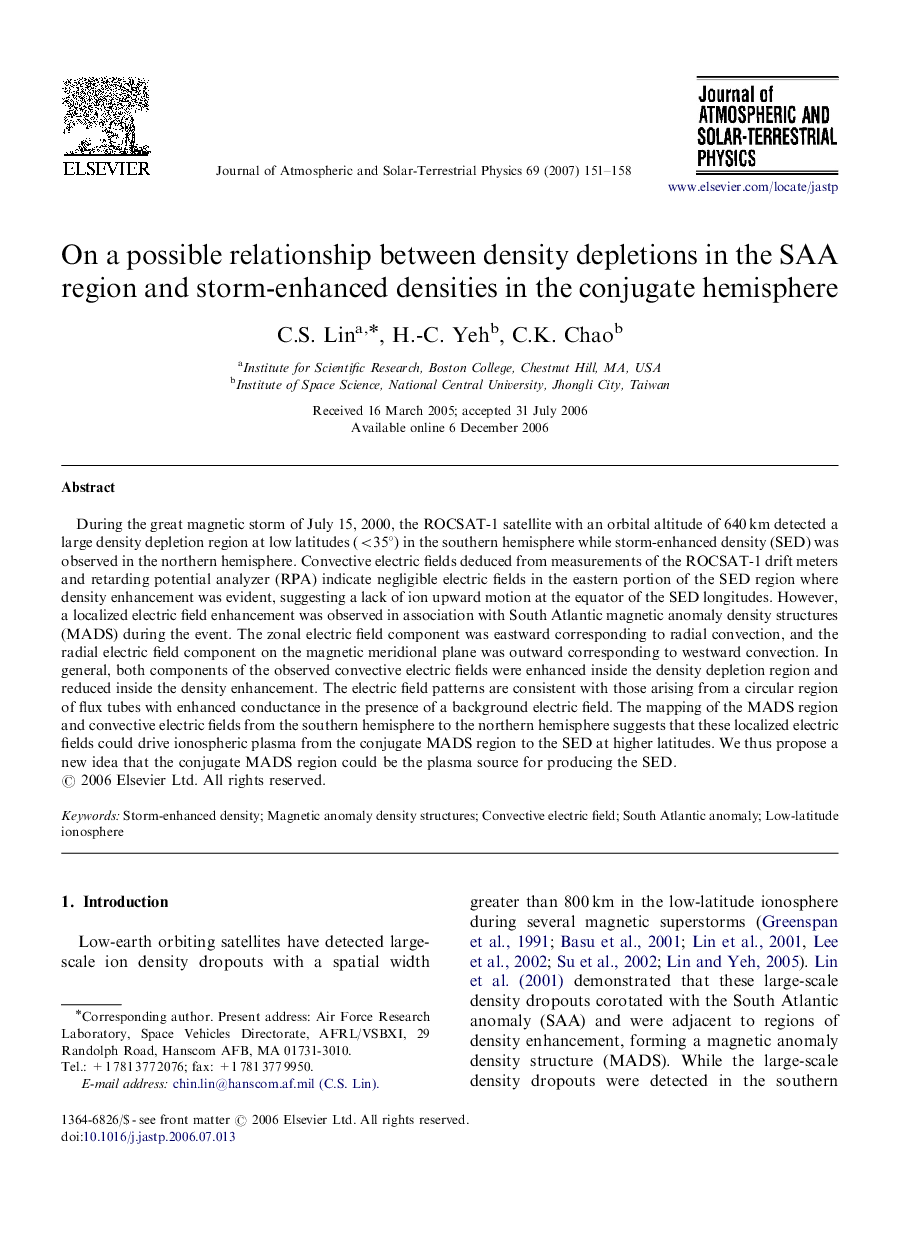| Article ID | Journal | Published Year | Pages | File Type |
|---|---|---|---|---|
| 1778221 | Journal of Atmospheric and Solar-Terrestrial Physics | 2007 | 8 Pages |
Abstract
During the great magnetic storm of July 15, 2000, the ROCSAT-1 satellite with an orbital altitude of 640 km detected a large density depletion region at low latitudes (<35°) in the southern hemisphere while storm-enhanced density (SED) was observed in the northern hemisphere. Convective electric fields deduced from measurements of the ROCSAT-1 drift meters and retarding potential analyzer (RPA) indicate negligible electric fields in the eastern portion of the SED region where density enhancement was evident, suggesting a lack of ion upward motion at the equator of the SED longitudes. However, a localized electric field enhancement was observed in association with South Atlantic magnetic anomaly density structures (MADS) during the event. The zonal electric field component was eastward corresponding to radial convection, and the radial electric field component on the magnetic meridional plane was outward corresponding to westward convection. In general, both components of the observed convective electric fields were enhanced inside the density depletion region and reduced inside the density enhancement. The electric field patterns are consistent with those arising from a circular region of flux tubes with enhanced conductance in the presence of a background electric field. The mapping of the MADS region and convective electric fields from the southern hemisphere to the northern hemisphere suggests that these localized electric fields could drive ionospheric plasma from the conjugate MADS region to the SED at higher latitudes. We thus propose a new idea that the conjugate MADS region could be the plasma source for producing the SED.
Related Topics
Physical Sciences and Engineering
Earth and Planetary Sciences
Geophysics
Authors
C.S. Lin, H.-C. Yeh, C.K. Chao,
